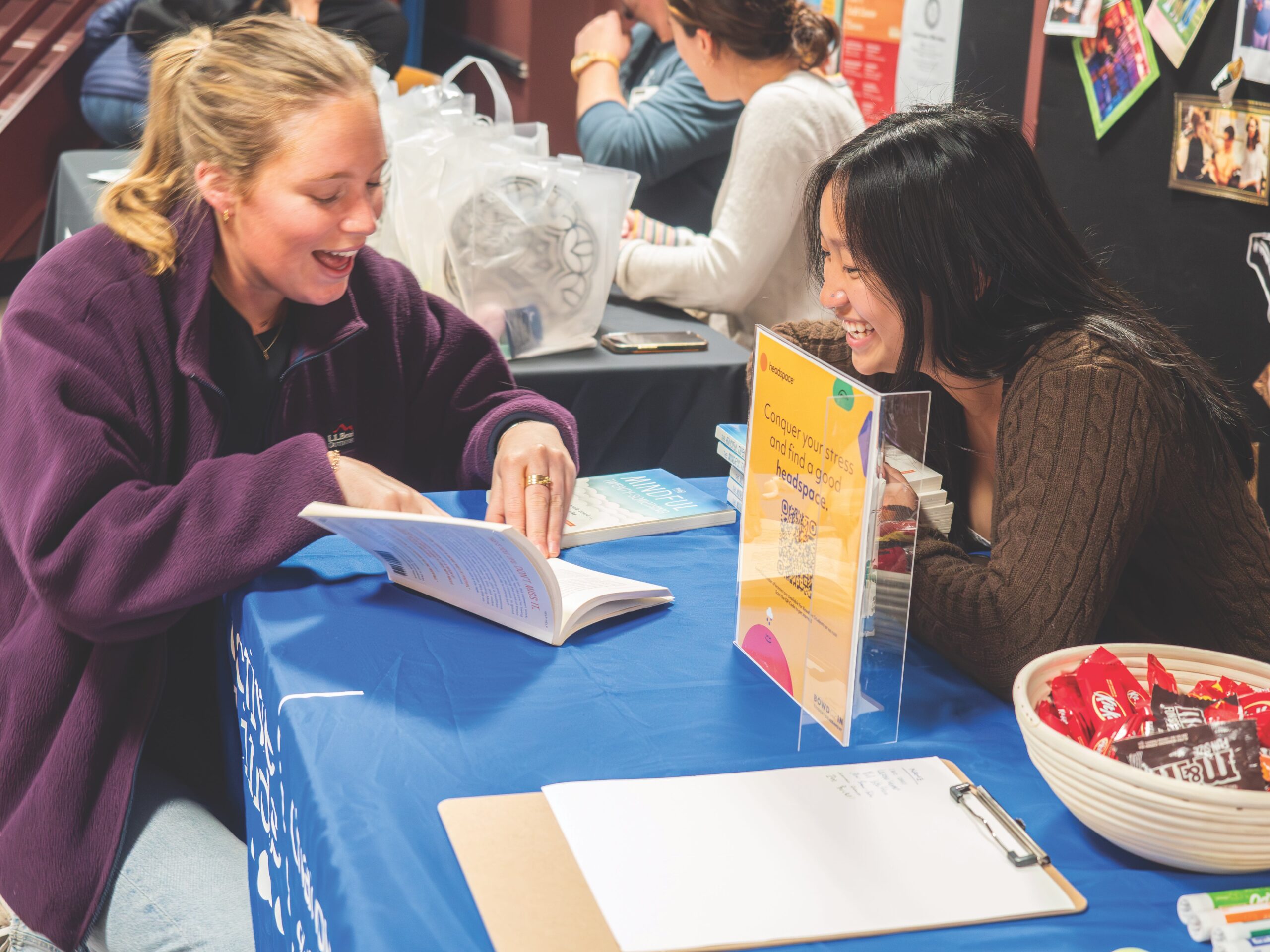 Alex Spear
Alex SpearLast Tuesday, Counseling and Wellness Services and Active Minds, a student mental health support group on campus, co-hosted a meet-and-greet event in Smith Union for World Mental Health Day to highlight the availability of on-campus mental health resources. Although World Mental Health Day occurred over fall break, event organizers aimed to carry on the spirit of the day by creating face-to-face connections with students.
“Having a regular presence on campus is really important because that way students can attach names to faces and think counseling is not scary at all … because when you know the people involved, your likelihood of tapping into such resources are way higher,” Active Minds co-leader Anju Chenaux-Repond ’25 said.
Given the often hectic schedules of Bowdoin students, Active Minds co-leader Alena Lemeshova ’26 said it is important for wellness resources to be known among the student body.
“Sometimes Bowdoin is so heavily academically loaded, even if you have a certain intention to rest, it may still feel difficult to relax, and you get sucked right back into doing the work again,” Lemeshova said. “So it’s really nice having the space and resources dedicated to that.”
The event comes after a busy week for BSG. Last week, BSG announced they would give out 700 free subscriptions to Headspace, a meditation and mental health support app, to support mental wellness at the College.
“It’s an awesome app that is very popular all around the world, and it has separate [resources for] meditation, sleep, studying and athletics,” Counseling and Wellness Services Student Assistant and 2024 Class President Melissa Su ’24 said.
The idea for the event originally came from Kate Nicholson, the assistant director of student wellness programs and coordinator of wellness outreach. Nicholson, the staff advisor for Active Minds, wanted to have a more approachable way for students to get in touch with mental health resources.
“We are planning to do a lot of collaboration [with Counseling and Wellness Services] and have previously done events with multicultural groups, so I think wellness is a bridge between the administration and students in some ways,” Su said.
Especially after the pandemic, Counseling and Wellness Services is seeking to expand its presence on campus.
“The Wellness Office is a relatively young office on campus. It’s been here for about five years now, and the pandemic was a big weird part [of it],” Kate Nicholson said. “So, we’re trying to build out the wellness office to become a more established, understood part of Bowdoin culture.”
One way to understand the distinction between wellness and counseling is a clinical versus non-clinical experience. Counseling may be viewed as more reactive treatments to specific, high-intensity issues, such as if someone is in crisis. Wellness takes a more proactive approach of low-intensity, gradual steps to improve someone’s well-being, which Nicholson sought to highlight with the event.
“Wellness was born from the notion of there being many ways for students to have a therapeutic experience outside of clinical therapy … [The goal of wellness is] to expand the ways that we teach skills and invite students to feel confident about their ability to take care of themselves and each other,” Nicholson said.
Looking into the future, Counseling and Wellness Services seeks to get more students involved with organizing programming to engage with students on campus.
“I want our students, our student representatives to be out there, forging relationships and building collaborative bridges, directing people,” Nicholson said. “I think wellness, as experienced by students, is really a ground up experience … so it becomes more powerful if the students are involved and initiating.”
